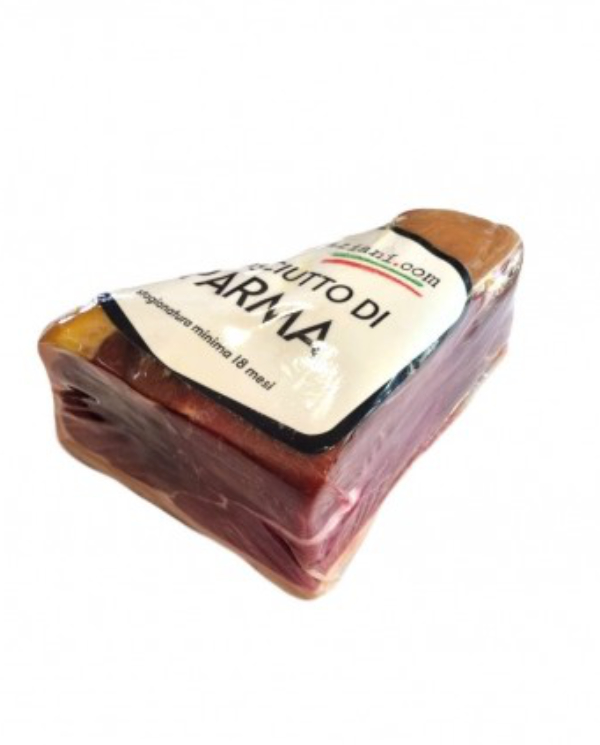Prosciutto di Parma (PDO), 1.550g
Famous Parma prosciutto, piece od cca 1kg

Prosciutto di Parma (PDO), 1.550g
Famous Parma prosciutto, piece od cca 1kg
Price per unit : 53.08 EUR/ KG
Product Rating
This product is not rated yet. Products can be rated by registrated users.
Webshop Gligora offers you the following benefits:
Delivery
For amounts over € delivery is free of charge for orders on the territory of Croatia.
For amounts over € delivery is free of charge for orders in Europe (zones 1, 2, 3 and 4).
Due to the high temperatures, in the period from 7.6 to 15.9., we send shipments with perishable goods in a thermal box, which is charged 7.70 €
Delivery Time
Croatia: 3 - 5 working days
EU: up to 7 days
Other: up to 3 weeks
Secure purchase
Credit cards (MasterCard® and Maestro®, Visa, Discover and Diners one-off)
Internet banking
Via online service PayPal
Parma Prosciutto (PDO) 18m+ is one of the most renowned Italian cured meat delicacies, valued for its exceptional quality and unique flavor. Prosciutto di Parma PDO is produced exclusively in the Parma region, where specific environmental conditions and traditional processing methods give this ham its distinctive aroma, delicate texture, and mild, slightly sweet taste.
For production are used only heavy pig breeds, raised in Italy and fed a natural diet, ensuring the highest quality meat. After careful salting, the ham undergoes a long curing and aging process that lasts at least 18 months. During this period, the hams are regularly inspected, and a layer of pork fat (sugnatura) is applied to the surface to ensure even texture and optimal aging conditions.
Before receiving the official crown seal with the PARMA inscription, each ham undergoes rigorous quality checks, including a smell test to confirm its authentic taste and aroma. Free from preservatives and additives, Parma Ham is distinguished by its pure and natural flavor profile, making it a beloved ingredient in Italian cuisine.

